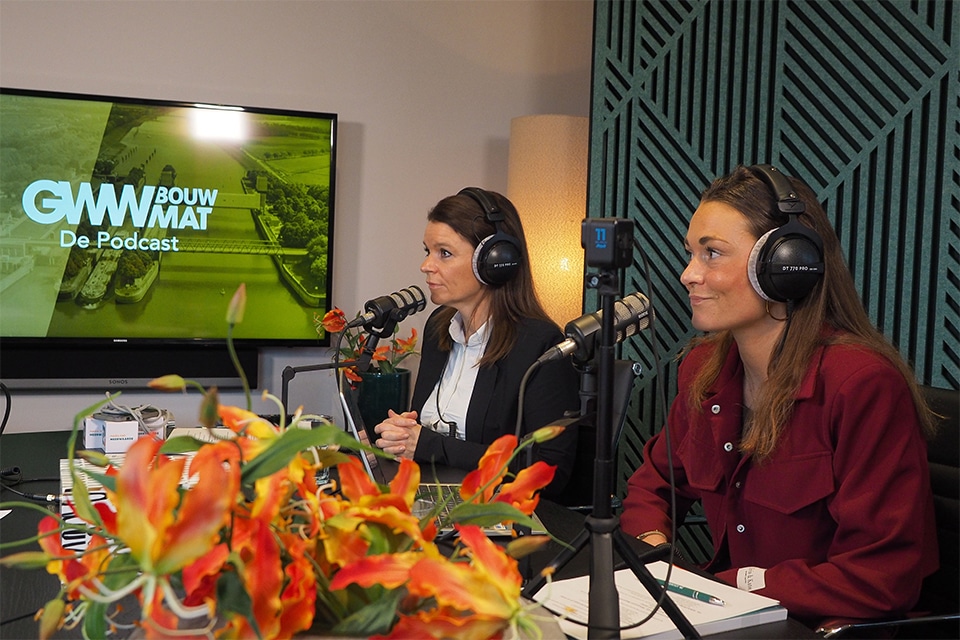
"Smart Maintenance is not an end but a means"
"We have contract forms (including Design, Build, Finance & Maintain - DBFM) where we are judged on our performance and rewarded or fined accordingly," says Celeste Martens, Manager of Maintenance at Croonwolter&dros Infra. "They are multi-year contracts. With Smart Maintenance, we can ensure that we monitor performance, save costs and generate data in the operational phase in the best possible way.
The ultimate goal is to perform maintenance at exactly the right time." Sander van Ruijven, Asset Manager Digitalization, adds: "In this regard, Smart Maintenance is not a goal, but a tool that helps us to perform asset management better and with which the customer obtains optimal value from their assets."

Processes, organization and technology must be balanced
"We want to be as efficient as possible; for critical or advanced plants and components, we want to deploy Smart Maintenance when possible," Celeste explains. "Smart Maintenance should ultimately help us make data-driven decisions -based on numbers- on projects."
According to Sander and Celeste, there is no total solution for everything. Celeste: "When you look at Smart Maintenance, it's not just about technology, such as sensors, data and algorithms. Processes, organization and technology have to be balanced."
Ways of collecting data
"Data can be collected through sensors, with the project determining what the type and quality of the sensor should be," Sander outlines. Added Celeste, "There are multiple ways to collect data. It can be done by human inspection, by data generated by sensors or by adding external data, for example on weather and traffic." With a specially developed sensor toolkit, the asset can be scanned on site to collect data. This does not affect availability.
Sander makes sure there is data and gives an example: "You can measure the pressure in a hydraulic line, but then you still don't know what the viscosity is because of the lack of ambient temperature. However, that temperature is retrievable and both data sets can be combined. You have to ask yourself each time what data you have available and what result you want to achieve. Data itself is also an asset. An algorithm can be as good as that, but the result is as strong as the quality of the data processed by the algorithm."
The process must be continuous and reliable
"You have to know your need and ambition," notes Celeste, "and see if those are in line with the data at hand. The process has to be continuous and reliable. It's a matter of learning and adjusting, to improve the reliability of the 'prediction.' We continuously improve according to the PDCA cycle (Plan-Do-Check-Act) our performance and organization."

Many benefits for clients
Clients are reaping the benefits of Smart Maintenance. "Smart Maintenance serves a societal interest, provides improved availability, facilitates longer service life, reduces costs and provides the client with a good reputation and image. It provides increased safety, availability and delivers a nice optimization, which in turn contributes to sustainability." Through a technical management application, a technician can gain "real time" insight into the status of installations from a laptop or PC.
"Of course, we often talk about predictive maintenance, based on data and algorithms. However, even a human can make a prediction. Data helps us and teaches us to see the condition of an asset," Sander explains. "The learning process never stops, that's the beauty of it. We deploy Smart Maintenance consciously and in a thoughtful way, relying on our experts in the field."
Making smart use of resources
"We have multiple ways of sending data, the way is case-dependent. The method is determined by security level and location," Sander said. Celeste, in conclusion, "We are an integrator, we like to bring things together from different vendors and packages. We believe in bringing the whole chain into this and make smart use of our resources."
Heeft u vragen over dit artikel, project of product?
Neem dan rechtstreeks contact op met Croonwolter&dros.
 Contact opnemen
Contact opnemen




